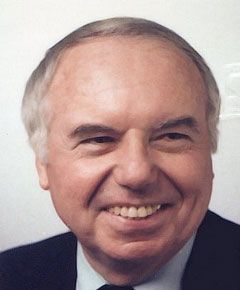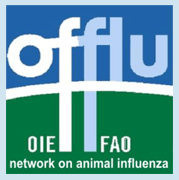Georges Bennejean

- Born: 1930
- Died: 2015
- France
Georges Bennejean was born in Gueret, a small town in the centre of France. His father was an officer in the French army, and Georges spent his youth overseas, in Africa and later in Indo-China during the Second World War under the Japanese occupation.
Returning to France, he gained his veterinary qualification in 1956 at the Veterinary School of Lyon, founded in 1762 as the world’s first veterinary school. He completed his training at the same University, in microbiology (1962) and immunology (1968).
In 1960, he joined the Poultry Experimental Station in Ploufragan, a new centre of research created to develop the young poultry industry in Brittany in the areas of genetics, nutrition, breeding and pathology. Georges was in charge of poultry diseases, and the parasitic diseases of coccidiosis, ascaridiasis and capillariasis posed the most urgent problems. He developed facilities and techniques to prevent and treat these conditions.
Later, recognition of the importance of microbiological diseases led the Veterinary Services of the Ministry of Agriculture to build a new laboratory and facilities in Ploufragan: The National Laboratory of Avian Pathology. As Director, Georges was responsible for the creation of this laboratory of 1000 sqm, 34 experimental rooms with filtered air, 25 isolators and a SPF chicken unit. Diseases studied by his team of 50 researchers and technicians included Marek’s disease, Newcastle disease, infectious bronchitis, mycoplasmosis, Gumboro disease, turkey rhinotracheitis and egg drop syndrome.
As an expert member of the Scientific Veterinary Committee of the European Economic Community, Georges contributed to EEC guidance concerning important diseases such as Newcastle disease, avian influenza and mycoplasmosis.
He was President of the WVPA (1989-1993), and President of the French branch of WVPA (1976-1998), succeeding Prof Brion. He retired in 1995 and his contribution to veterinary science was recognised by awards from the poultry industry. As director of research, he reached the highest grade in the publicly-funded research sector in France. He was elected in 1997 as a member of the Academie Veterinaire de France.
He leaves behind his wife Annick, 3 children and 6 grandchildren.
< back to honours list
Returning to France, he gained his veterinary qualification in 1956 at the Veterinary School of Lyon, founded in 1762 as the world’s first veterinary school. He completed his training at the same University, in microbiology (1962) and immunology (1968).
In 1960, he joined the Poultry Experimental Station in Ploufragan, a new centre of research created to develop the young poultry industry in Brittany in the areas of genetics, nutrition, breeding and pathology. Georges was in charge of poultry diseases, and the parasitic diseases of coccidiosis, ascaridiasis and capillariasis posed the most urgent problems. He developed facilities and techniques to prevent and treat these conditions.
Later, recognition of the importance of microbiological diseases led the Veterinary Services of the Ministry of Agriculture to build a new laboratory and facilities in Ploufragan: The National Laboratory of Avian Pathology. As Director, Georges was responsible for the creation of this laboratory of 1000 sqm, 34 experimental rooms with filtered air, 25 isolators and a SPF chicken unit. Diseases studied by his team of 50 researchers and technicians included Marek’s disease, Newcastle disease, infectious bronchitis, mycoplasmosis, Gumboro disease, turkey rhinotracheitis and egg drop syndrome.
As an expert member of the Scientific Veterinary Committee of the European Economic Community, Georges contributed to EEC guidance concerning important diseases such as Newcastle disease, avian influenza and mycoplasmosis.
He was President of the WVPA (1989-1993), and President of the French branch of WVPA (1976-1998), succeeding Prof Brion. He retired in 1995 and his contribution to veterinary science was recognised by awards from the poultry industry. As director of research, he reached the highest grade in the publicly-funded research sector in France. He was elected in 1997 as a member of the Academie Veterinaire de France.
He leaves behind his wife Annick, 3 children and 6 grandchildren.
< back to honours list

